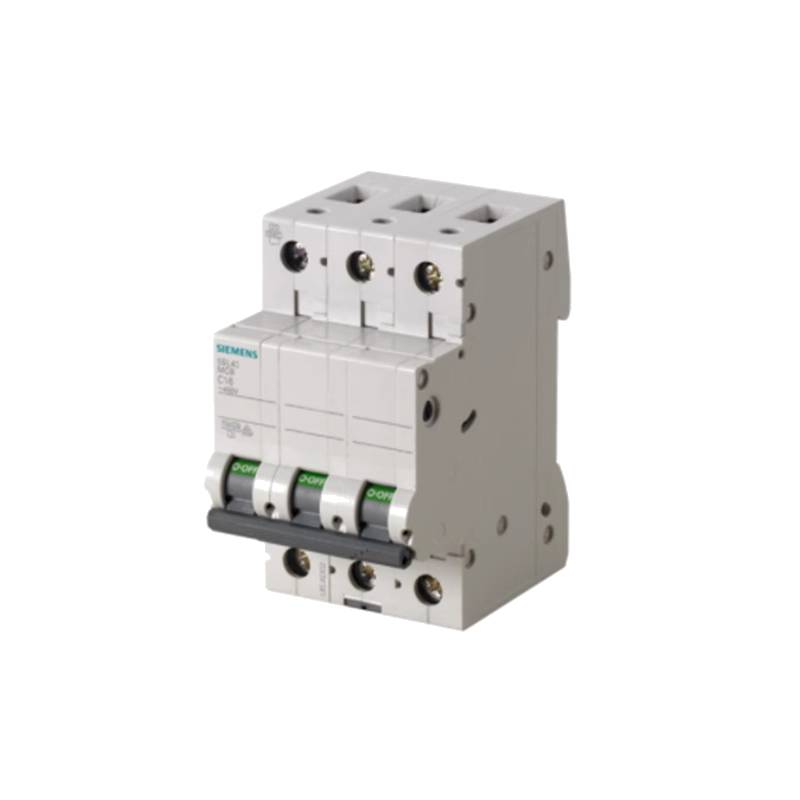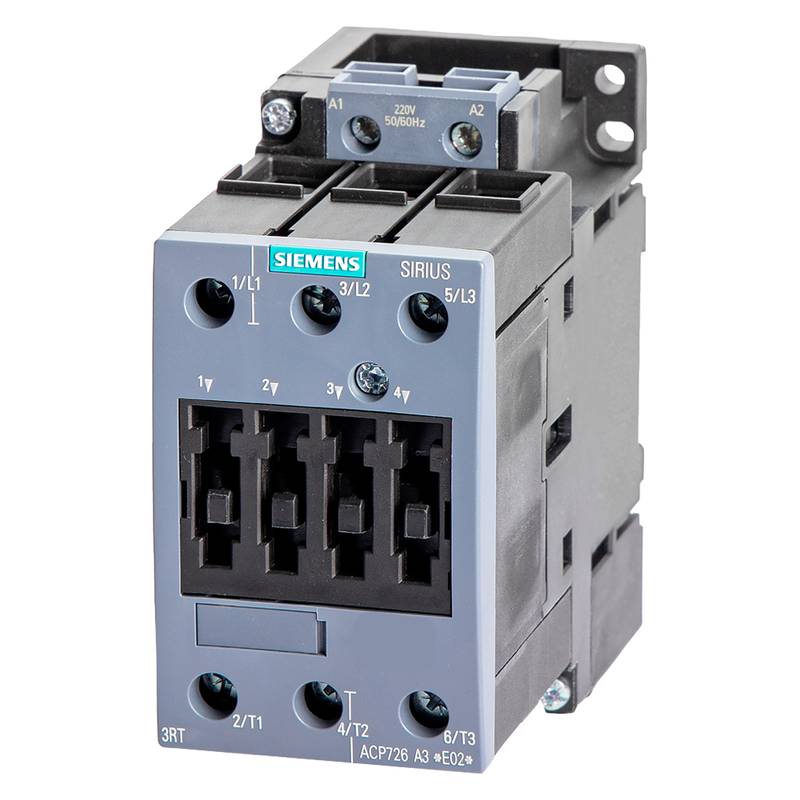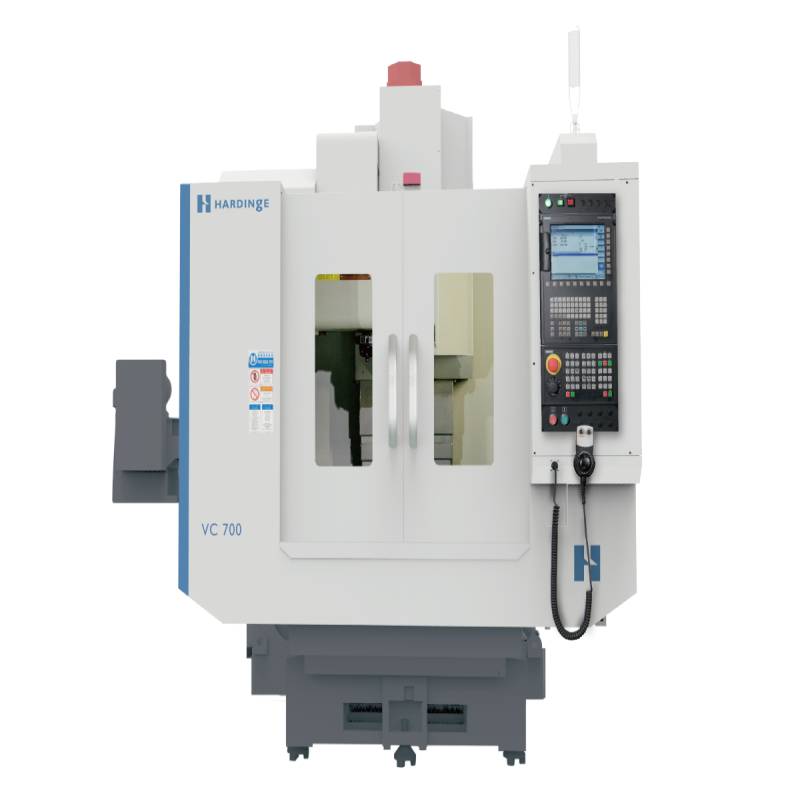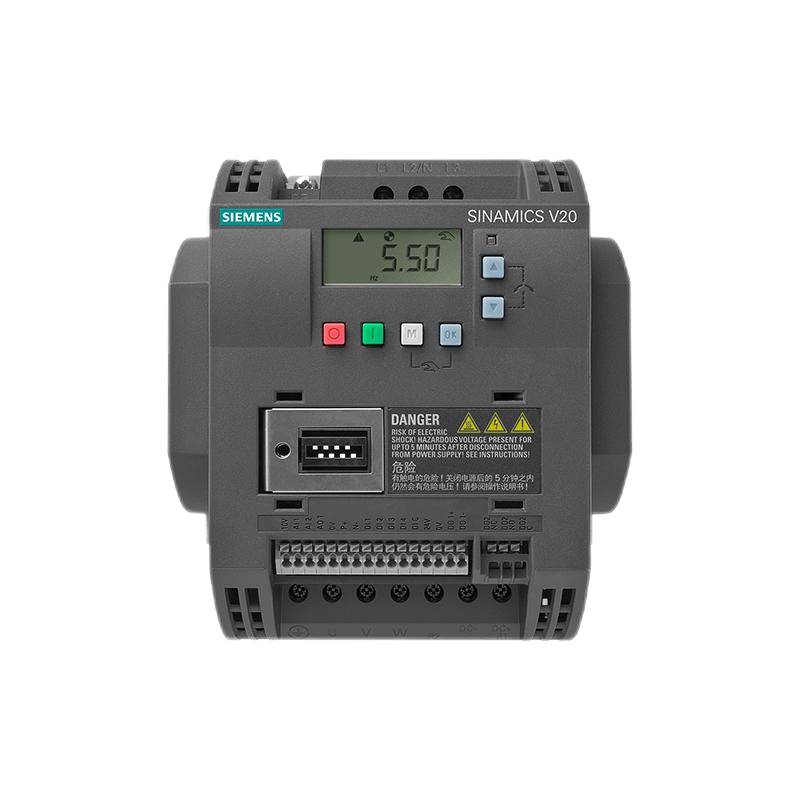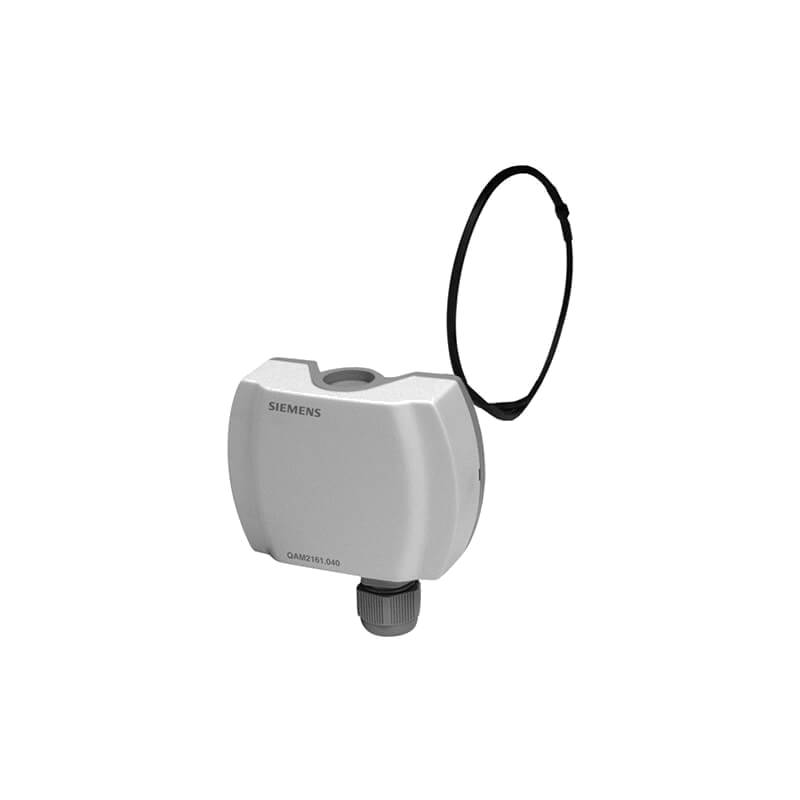
The Siemens 5SN6313-7CN Miniature Circuit Breaker (MCB) stands as a robust solution for safeguarding small power equipment and control cabinets. This 3-pole, 13A device offers superior protection against overcurrents and short circuits, ensuring operational reliability and component longevity in demanding industrial environments. Its compact design and high breaking capacity make it an ideal choice for critical applications where space is at a premium and dependable performance is paramount.
Product Specifications
| Feature | Specification |
| :------------------- | :------------------------------------------ |
| Manufacturer | Siemens |
| Product Series | 5SN6 |
| Product Type | Miniature Circuit Breaker (MCB) |
| Pole Configuration | 3-Pole |
| Rated Current | 13A |
| Breaking Capacity | 6kA (IEC 60898-1) |
| Tripping Curve | C |
| Voltage Rating | 230/400V AC |
| Frequency | 50/60 Hz |
| Mounting Type | DIN Rail |
| Terminal Type | Screw Terminals |
| Operating Temperature| -25°C to +45°C |
| Ingress Protection | IP20 |
| Certifications | CE, VDE |
Core Features & Market Positioning
Engineered with Siemens' renowned quality, the 5SN6313-7CN MCB delivers exceptional performance and reliability. Its C-curve tripping characteristic is specifically designed to handle moderate inrush currents typical of inductive loads, such as motors and transformers, without nuisance tripping. This differentiation positions it as a preferred choice for control cabinets where precise overload and short-circuit protection are critical to prevent damage and downtime. The robust construction ensures long service life, even under frequent switching operations.
Key Application Scenarios
The Siemens 5SN6313-7CN MCB is extensively utilized in the protection of circuits for small power equipment, including lighting systems, socket outlets, and control circuits within industrial automation and building management systems. It is particularly suited for applications in control cabinets, distribution boards, and sub-distribution systems where reliable and compact circuit protection is essential. Its 3-pole configuration ensures comprehensive protection for three-phase loads, commonly found in motor control applications and HVAC systems.
Practical System Integration Guidance
Integrating the Siemens 5SN6313-7CN MCB is straightforward due to its standard DIN rail mounting and screw terminal connections. For proper installation, ensure the breaker is de-energized before wiring. Connect the incoming power supply to the upper terminals and the outgoing load to the lower terminals, observing the correct phase sequence for 3-phase applications. Ensure all connections are tightened to the recommended torque specification to prevent overheating and ensure electrical integrity. Compatibility with other Siemens circuit protection devices and busbar systems simplifies panel building and ensures a cohesive electrical installation.
Operation and Risk Mitigation
The primary function of the Siemens 5SN6313-7CN MCB is to automatically interrupt electrical circuits during overcurrent or short-circuit conditions, thereby protecting equipment and preventing potential fire hazards. Users should be aware that a tripped breaker indicates a fault condition that requires investigation. Common troubleshooting involves identifying the cause of the overload or short circuit, such as a faulty appliance or wiring issue. After resolving the fault, the breaker can be reset by simply lifting the toggle lever. Never force a breaker that has tripped multiple times without a thorough inspection of the circuit.
Scalability & Long-Term Value
The 5SN6 series MCBs from Siemens are designed for modularity and compatibility, offering excellent long-term value. The 5SN6313-7CN can be seamlessly integrated into existing or planned electrical distribution systems, supporting scalability as power requirements evolve. Its robust design minimizes the need for premature replacement, and its compatibility with a wide range of Siemens ancillary devices, such as auxiliary contacts and fault alarm switches, allows for enhanced monitoring and integration into more sophisticated control and IIoT platforms. This future-proofs electrical installations, allowing for upgrades and expansions with confidence.
---
Frequently Asked Questions (FAQs)
Q1: What is the breaking capacity of the Siemens 5SN6313-7CN MCB?
The Siemens 5SN6313-7CN MCB features a breaking capacity of 6kA. This rating indicates its ability to safely interrupt fault currents up to 6,000 amperes. It meets the requirements of IEC 60898-1 for domestic and similar installations.
This breaking capacity ensures protection against severe short-circuit events. It is suitable for typical power distribution applications in control cabinets. The MCB's robust design can handle these fault conditions without damage.
Choosing an MCB with adequate breaking capacity is crucial for safety. It prevents cascading failures and protects downstream equipment. The 6kA rating is sufficient for many small power and control cabinet applications.
Q2: Can the Siemens 5SN6313-7CN be used for motor protection?
Yes, the Siemens 5SN6313-7CN MCB is suitable for protecting small motor circuits. Its C-curve tripping characteristic is designed to accommodate the inrush currents typical of motor startups. This prevents nuisance tripping during normal operation.
For larger motors or applications with very high starting currents, a dedicated motor protection circuit breaker (MPCB) might be more appropriate. However, for smaller motors, this MCB provides effective overload and short-circuit protection. Always consult motor manufacturer specifications.
Proper sizing and application are key. Ensure the MCB's rated current and tripping curve are matched to the motor's requirements. This guarantees both protection and reliable operation of the motor.
Q3: What is the significance of the "C" in the tripping curve?
The "C" designation refers to the MCB's tripping characteristic. A C-curve breaker is designed to trip between 5 and 10 times the rated current. This makes it ideal for circuits with moderate inductive loads.
These loads, such as transformers or motors, can draw higher temporary currents upon activation. The C-curve allows these inrush currents without causing the breaker to trip unnecessarily. It offers a balance between protection and operational stability.
In contrast, B-curves trip between 3-5 times the rated current (for resistive loads), and D-curves trip between 10-20 times (for very high inrush loads like welding transformers). The C-curve is a common choice for general-purpose industrial and commercial applications.
Q4: How do I properly install the Siemens 5SN6313-7CN MCB?
Installation involves mounting the MCB onto a standard 35mm DIN rail. Ensure the power supply to the circuit is completely disconnected before proceeding. Connect the line conductors to the upper terminals and the load conductors to the lower terminals.
For a 3-pole breaker, ensure all three poles are properly wired to the respective phases of the power supply and the load. Use appropriate gauge wiring that matches the MCB's current rating. Tighten terminal screws firmly to ensure good electrical contact and prevent overheating.
After wiring, a visual inspection and insulation resistance test should be performed before re-energizing the circuit. The MCB should be clearly labeled according to the circuit it protects. Always follow local electrical codes and safety standards during installation.
Q5: What is the voltage rating for this MCB?
The Siemens 5SN6313-7CN MCB has a voltage rating of 230/400V AC. This means it is suitable for use in systems operating at these standard AC voltages. The 230V rating typically applies to single-phase circuits, while 400V is for three-phase systems.
This dual voltage rating makes it versatile for various applications within industrial and commercial settings. It can protect both single-phase and three-phase circuits commonly found in control cabinets and distribution boards. Ensure your system voltage matches the MCB's rating.
Using an MCB with an incorrect voltage rating can lead to equipment damage or safety hazards. Always verify that the system voltage does not exceed the breaker's specified limits for safe and reliable operation.
Q6: What troubleshooting steps should I take if the MCB trips?
If the Siemens 5SN6313-7CN MCB trips, the first step is to identify the cause. Check if there is an overload condition (too many devices connected) or a short circuit (faulty wiring or appliance). Visually inspect connected equipment for damage.
After identifying and rectifying the fault, you can reset the MCB by lifting the toggle lever. If the breaker trips immediately after resetting, it indicates a persistent short circuit. If it trips again after some time, it suggests an overload issue that has not been fully resolved.
If the MCB trips repeatedly without an obvious cause, or if you suspect internal damage, do not attempt to reset it further. It is advisable to replace the MCB and have the circuit inspected by a qualified electrician to ensure safety and prevent further damage.
Q7: Is the Siemens 5SN6313-7CN compatible with other brands of electrical components?
While the Siemens 5SN6313-7CN is designed to fit standard 35mm DIN rails, which are universally used, compatibility with other brands' specific ancillary devices (like auxiliary switches or fault indicators) may vary. Siemens components are typically optimized for seamless integration within their own product ecosystems. It is always recommended to verify compatibility specifications if mixing brands for ancillary devices.
The core functionality of circuit protection is based on standardized electrical principles, so the breaker itself will function correctly on any compliant DIN rail. However, for advanced features or integrated systems, sticking with a single manufacturer like Siemens often provides the most reliable and straightforward integration path. This ensures all components work harmoniously together.
For basic wiring and circuit protection, it will integrate fine. When considering advanced add-ons or complex system integration, checking datasheets or consulting with the manufacturer is the best approach to avoid unforeseen issues and ensure optimal system performance.
Q8: What is the IP rating of this MCB and what does it mean?
The Siemens 5SN6313-7CN MCB has an IP20 rating. IP stands for Ingress Protection, and the rating indicates the level of protection the enclosure provides against foreign objects and water. The '2' in IP20 signifies protection against solid objects greater than 12.5mm (e.g., fingers), and the '0' indicates no specific protection against water.
This IP20 rating means the MCB is suitable for use in dry, indoor environments where accidental contact by fingers is the primary concern. It is not designed for environments exposed to moisture, dust, or corrosive substances. Proper enclosure or cabinet mounting is essential to maintain this protection level.
Therefore, this MCB is typically installed within control cabinets, distribution boards, or enclosures that provide a higher level of environmental protection. Its use in exposed locations without such protection would compromise its safety and operational integrity.
Q9: Can this MCB be used in DC circuits?
No, the Siemens 5SN6313-7CN MCB is designed and rated for AC (Alternating Current) circuits only. Its specifications, including the voltage rating of 230/400V AC and breaking capacity, are tailored for AC applications. Using it in DC (Direct Current) circuits can lead to unsafe operation and equipment failure.
DC circuits present different challenges for circuit breakers, particularly in extinguishing the arc that forms upon interruption. MCBs designed for AC have specific features that facilitate arc quenching in alternating current. DC arcs are more sustained and require different breaker designs.
For DC applications, you must use an MCB specifically rated and designed for DC circuits. Always consult the product's technical documentation to confirm its intended application and voltage type.
Q10: What is the operational temperature range for the Siemens 5SN6313-7CN MCB?
The Siemens 5SN6313-7CN MCB is designed to operate within an ambient temperature range of -25°C to +45°C. This broad range ensures reliable performance across various environmental conditions encountered in industrial settings. Adhering to this range is crucial for maintaining the breaker's protective functions and lifespan.
Operating the MCB outside of its specified temperature range can affect its tripping characteristics and overall performance. Temperatures above +45°C can lead to premature tripping or reduced breaking capacity, while extreme cold below -25°C might impact the mechanical components. Ensure adequate ventilation if installed in enclosures.
It is important to consider the ambient temperature when selecting and installing electrical components. If the operational environment exceeds these limits, consider using specialized enclosures with climate control or selecting components with wider temperature ratings to ensure safety and reliability.














